The Shawl in Modern times
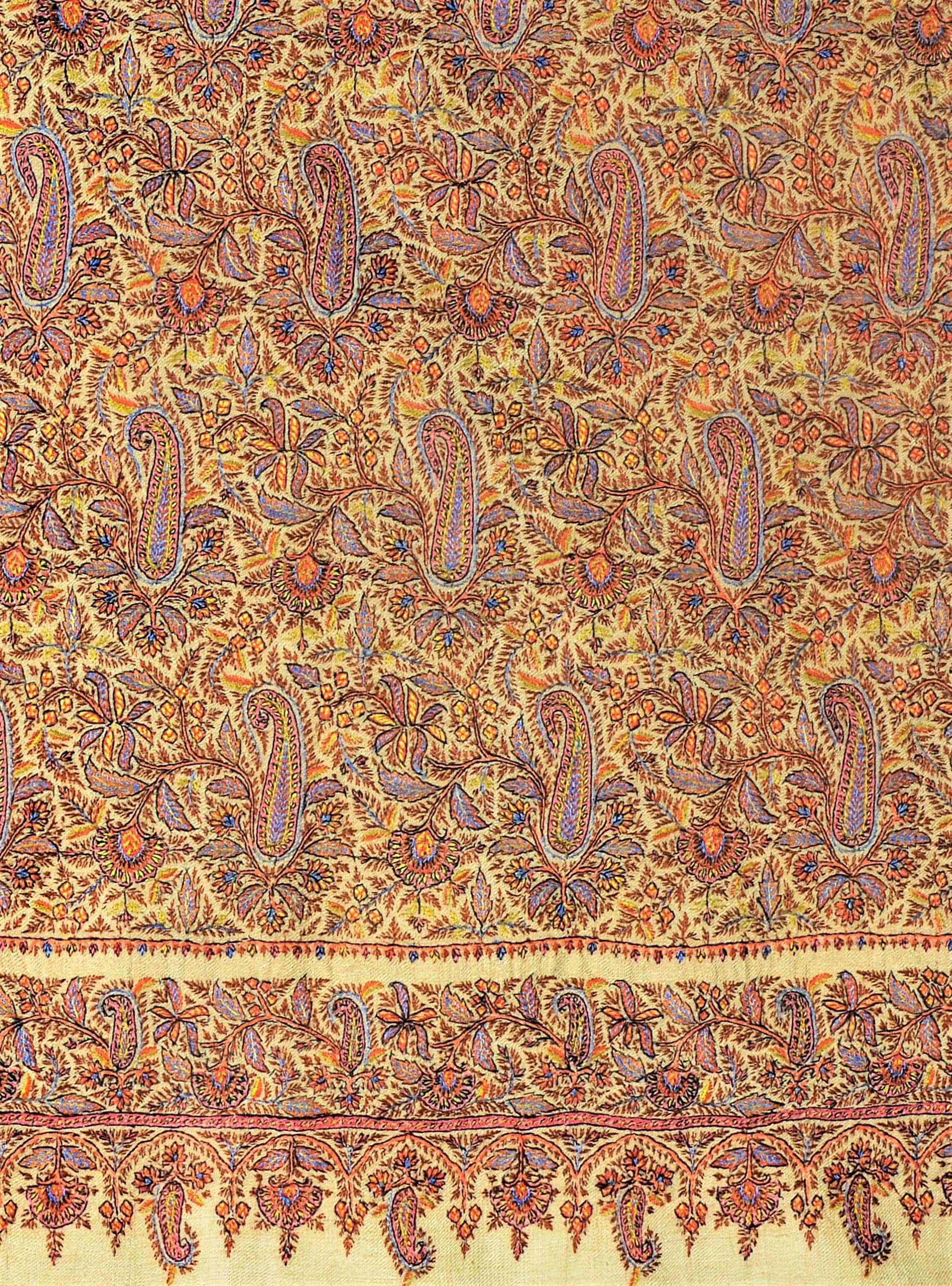
Dorukha Silk thread embroidery 1930s
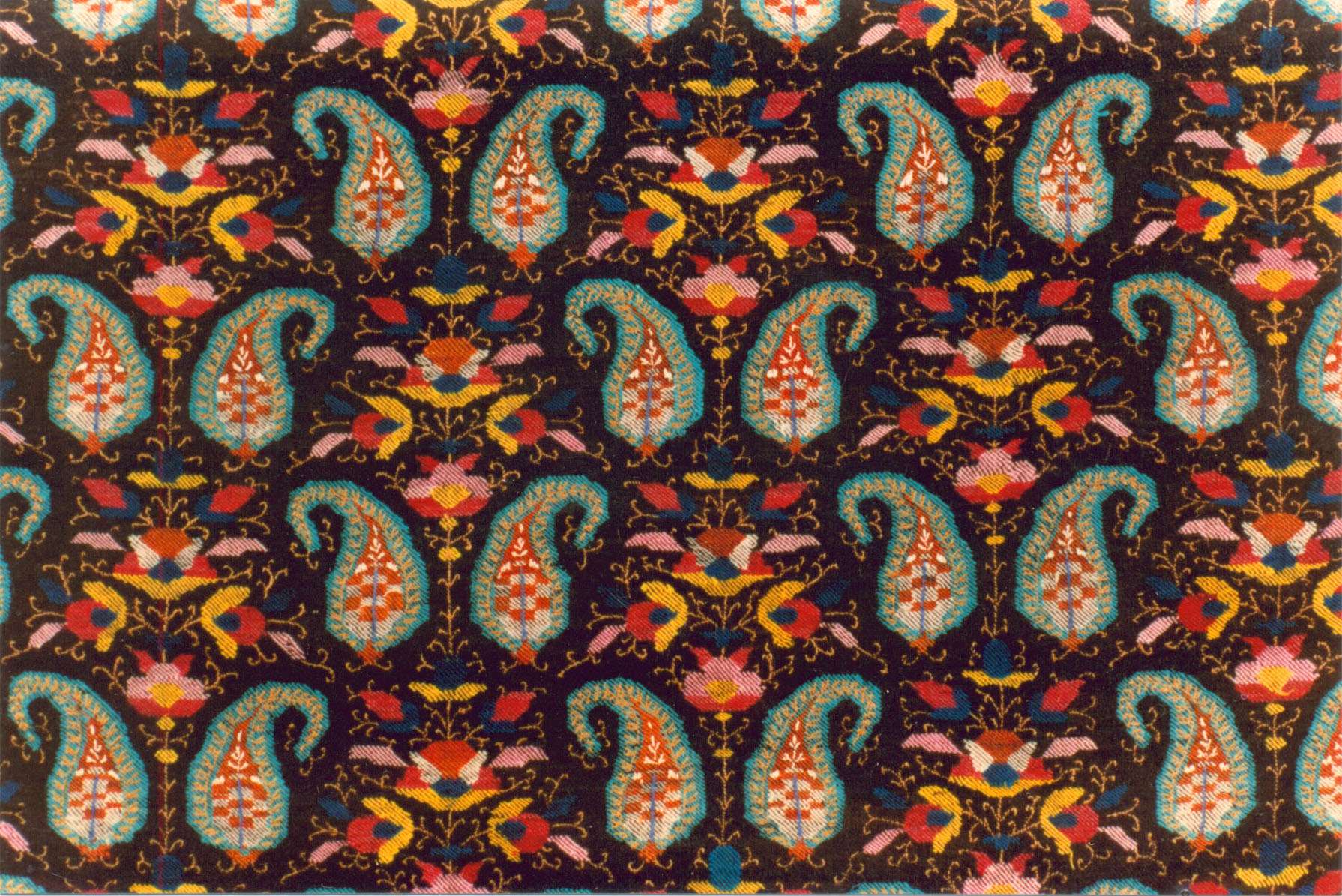
Pashmina Dorukha 1960s
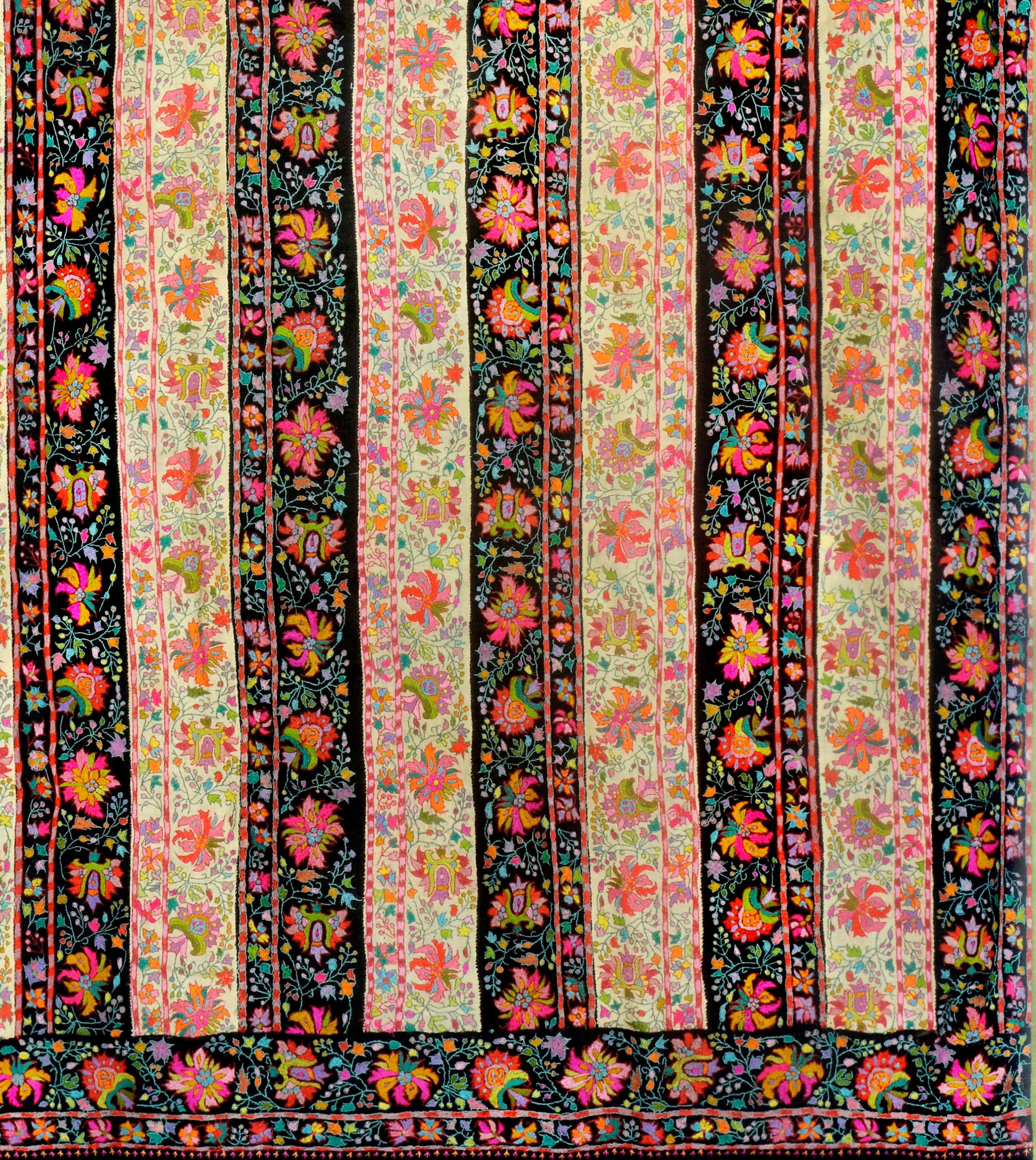
Najibabadi Dorukha design embroidery
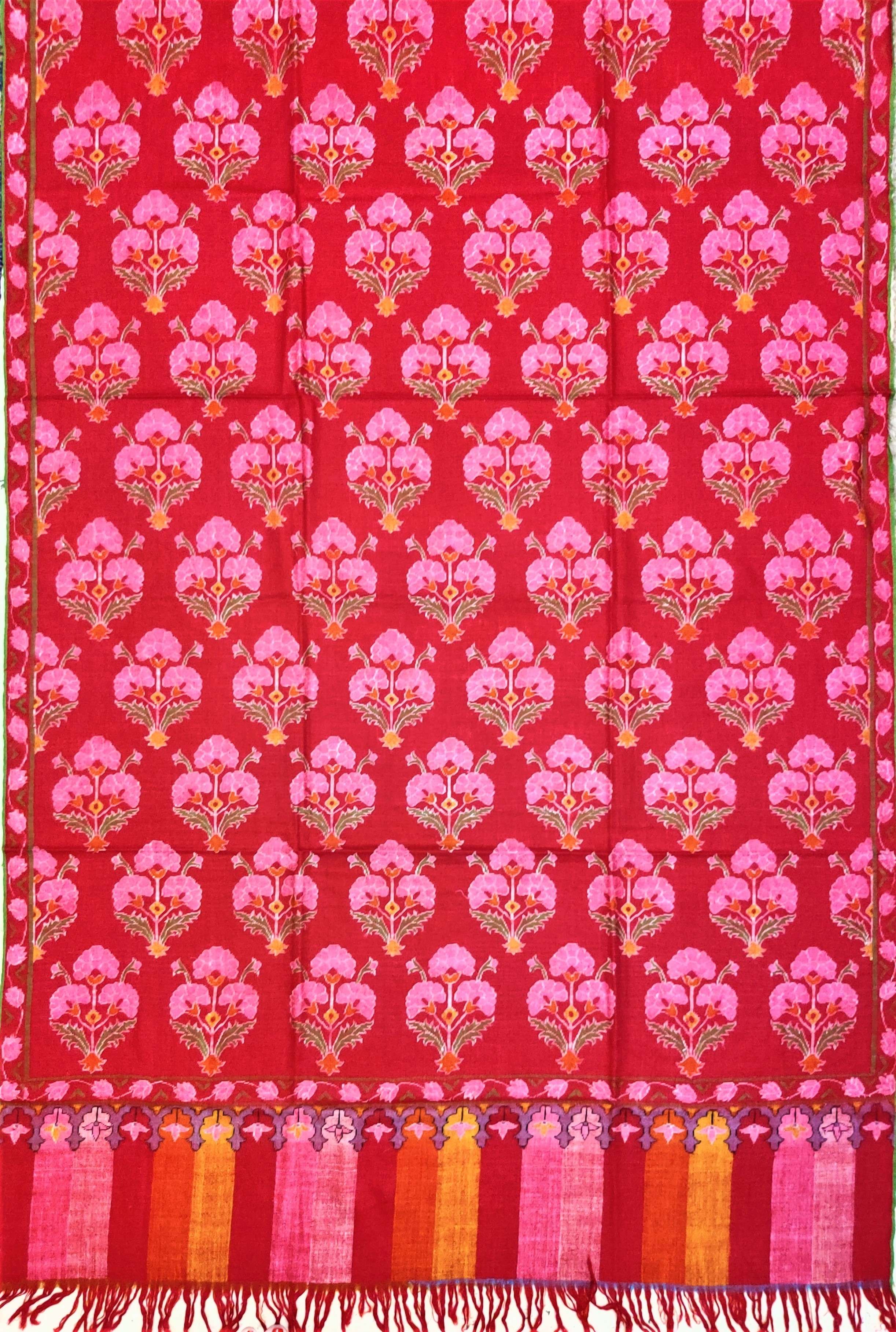
New Mughal triple flower buta Kani
After the virtual disappearance of fine kani shawl weaving in Kashmir for fifty years, Government of India set up a Kani Weaving Centre in village Kanihama, near Srinagar in 1980s. A lone old master weaver was hired to train young boys with delicate fingers in this craft, but it remained a demonstration project. Kani weaving really took off in a big way when the Kashmir wool carpet industry collapsed in the late 1990s and its weavers reverted to weaving fine reversible pashmina kani shawls. Wealthy and discerning elite emerged to patronize it.
Embroidering copies of kani shawls in wool on pashmina was introduced in Kashmir by Khwaja Yusuf, agent of a trading firm of Constantinople in the 1820s. A needle-worked shawl took far less time, cost far less and could be made quietly at home by one karigar, avoiding huge duties. Exceptionally fine embroidered or amlikar shawls continued to be made well into the 1930s and picked up again in the late 1950s. The designs were the old Mughal and European floral and paisley motifs. Chain stitch embroidery stoles and shawls in wool continued to be made mostly for tourists looking for something Kashmiri, hand-made and affordable. After Independence, hand spun and woven pashmina from Kashmir and the Himalayan region was made popular and accessible all over India by Khadi and Village Industries Corporation based on Gandhiji’s ideal of self-reliance. Always considered a prerogative of the wealthy, fine pashmina shawls with hand embroidery and woven kanis captured the imagination of the shawl connoisseurs across the globe by late 1990s.
Masters of the ‘art of the needle’, the Najibabadi rafugars had emerged as definitive restorers and dealers of antique kani and embroidered shawls from Calcutta and other Princely States. They had become experts at remodelling and cutting and joining the good parts by matching the design. By early 2000 they had embarked on copying the old priceless dorukhas in embroidery that mimic weaving and painting or kalamkari. Today, virtually the whole town is engaged in this activity. A more recent popular innovation is aari or fine chain stitch embroidery that is done in silken threads on a painted background or in golden and silver threads and by several karigars on a frame.
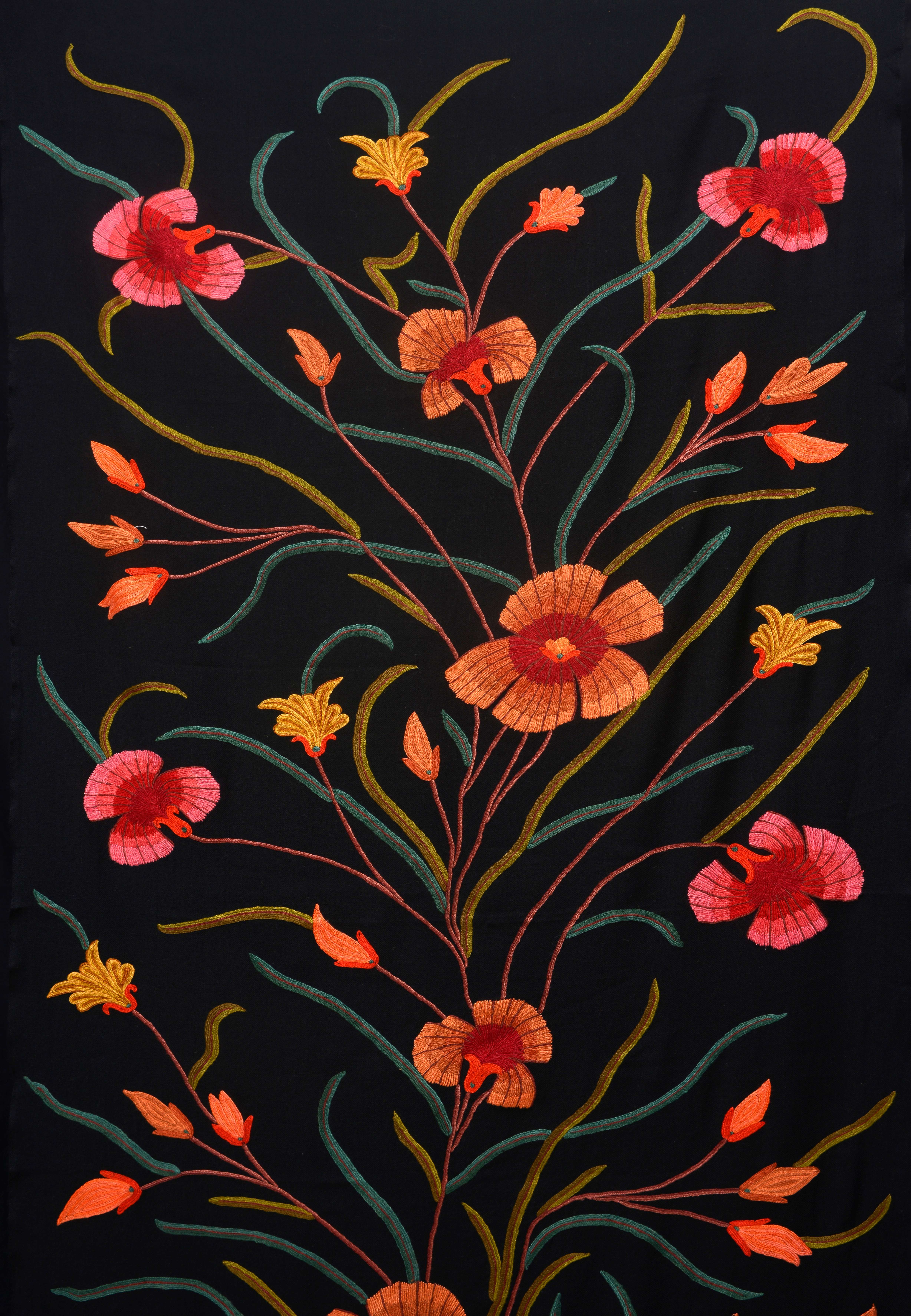
Crewel Embroidery wool stole
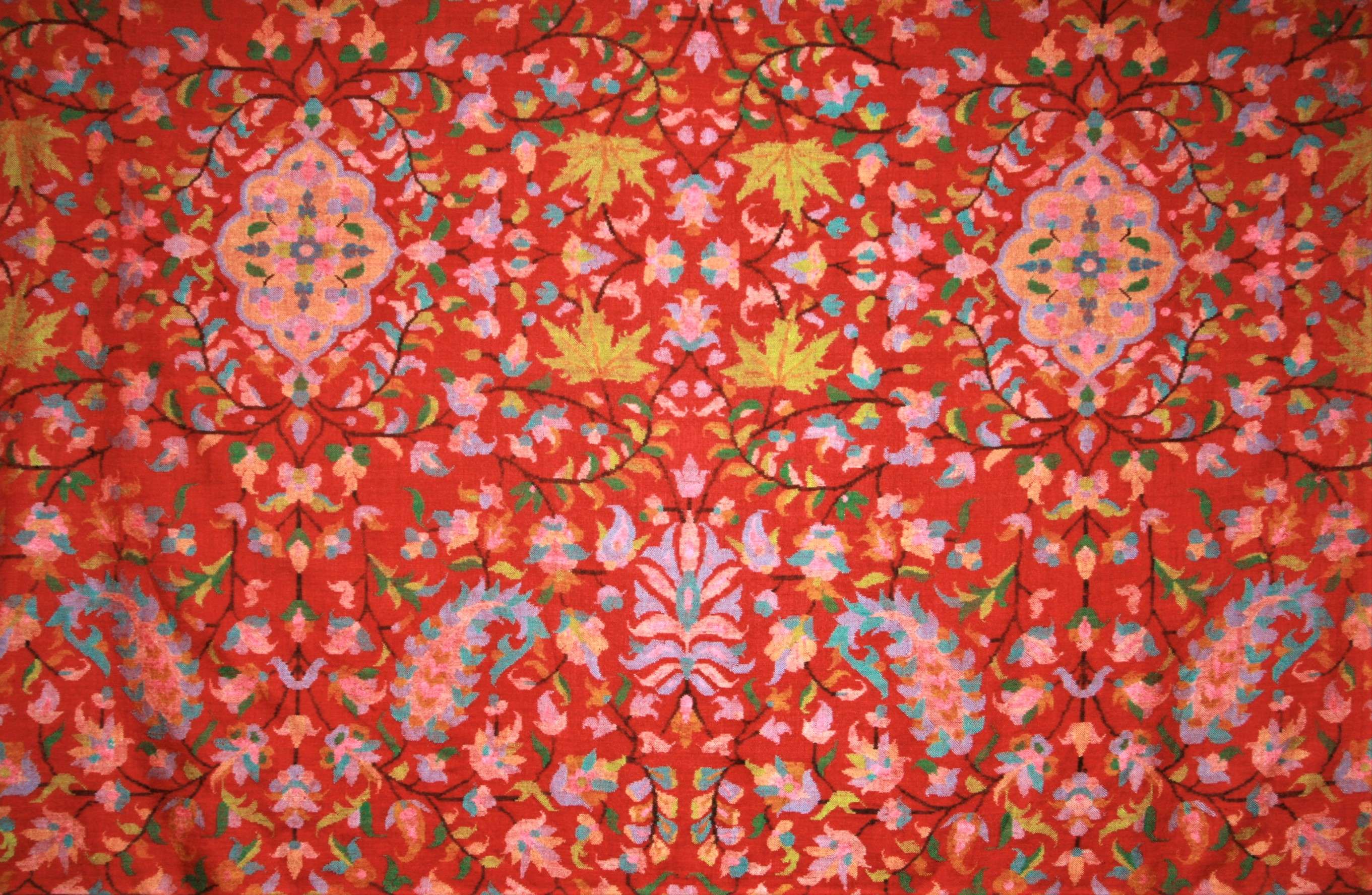
New Pashmina Kani shawl 2005
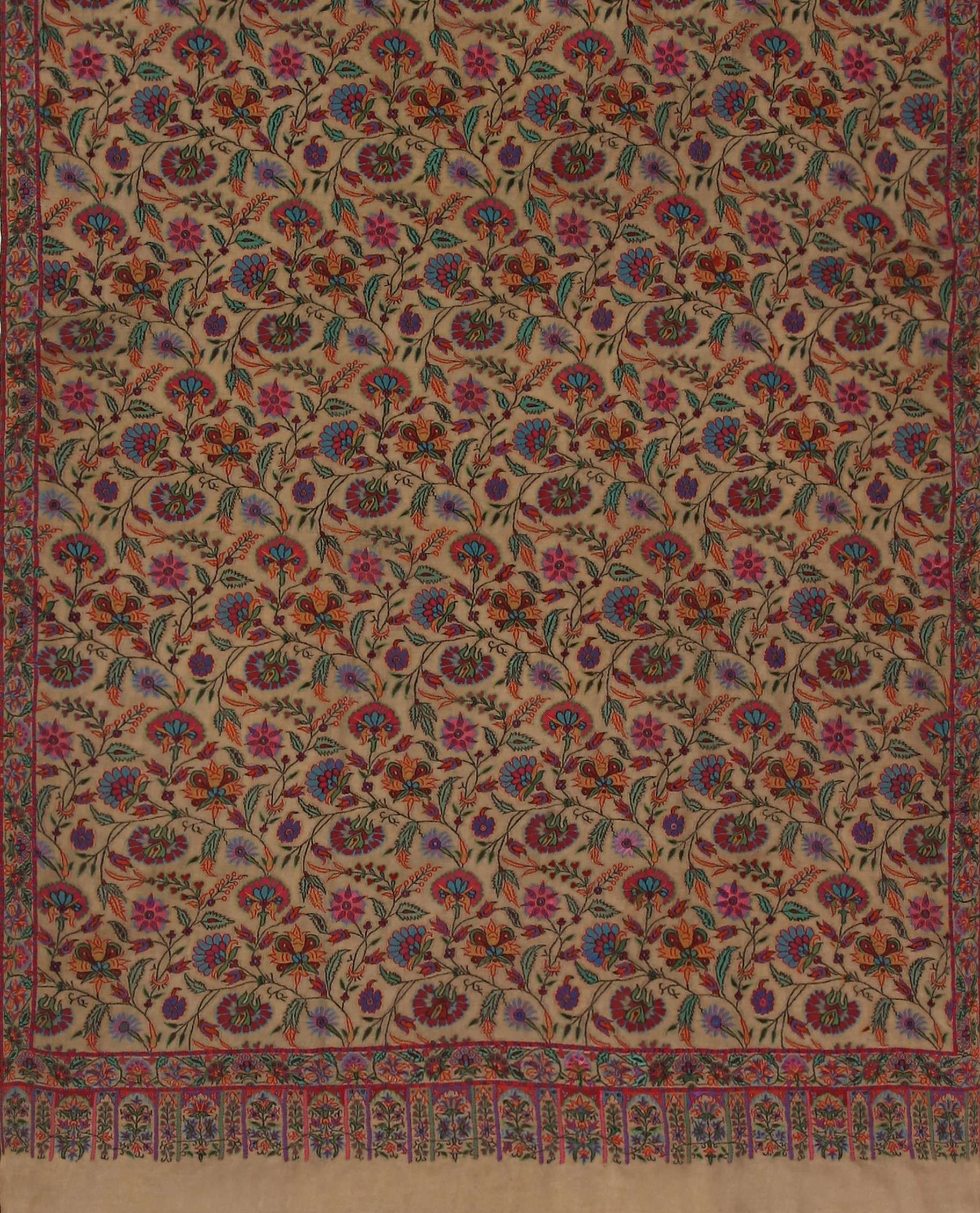
Najibabadi Kalamkari and embroidery
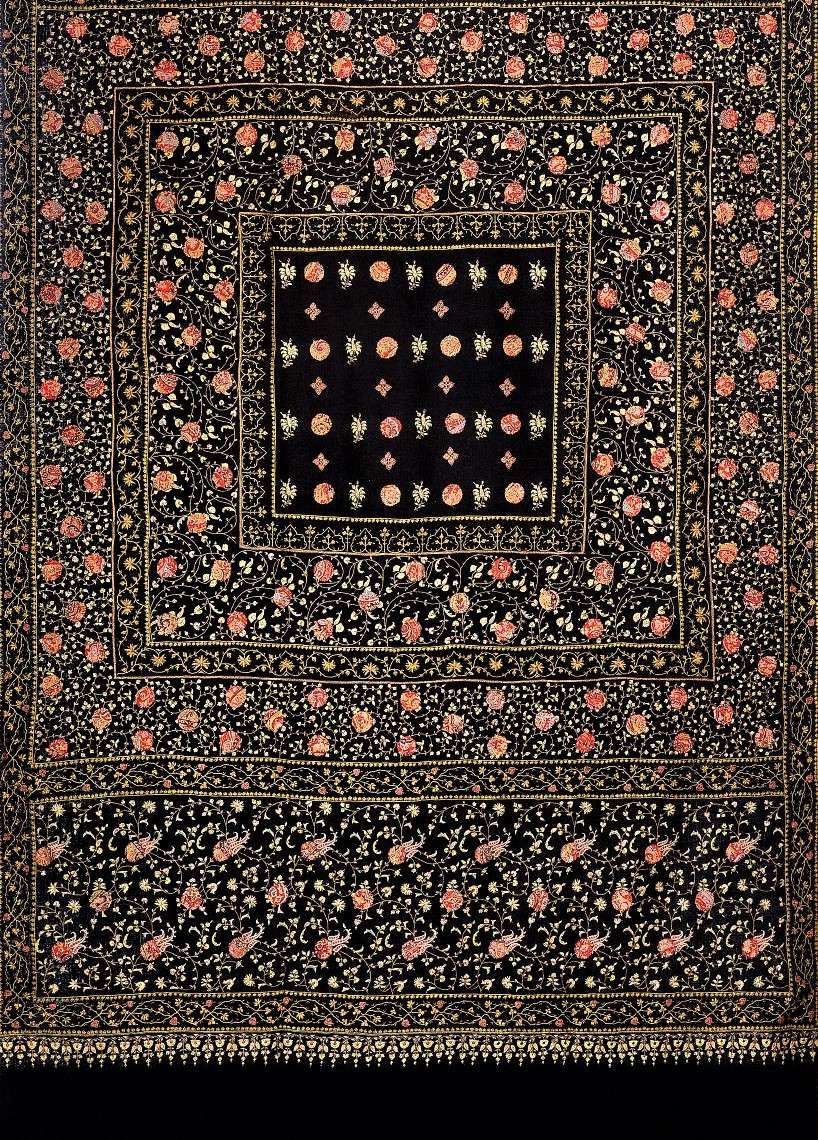
Kashmiri Embroidery Pashmina with kani patches
